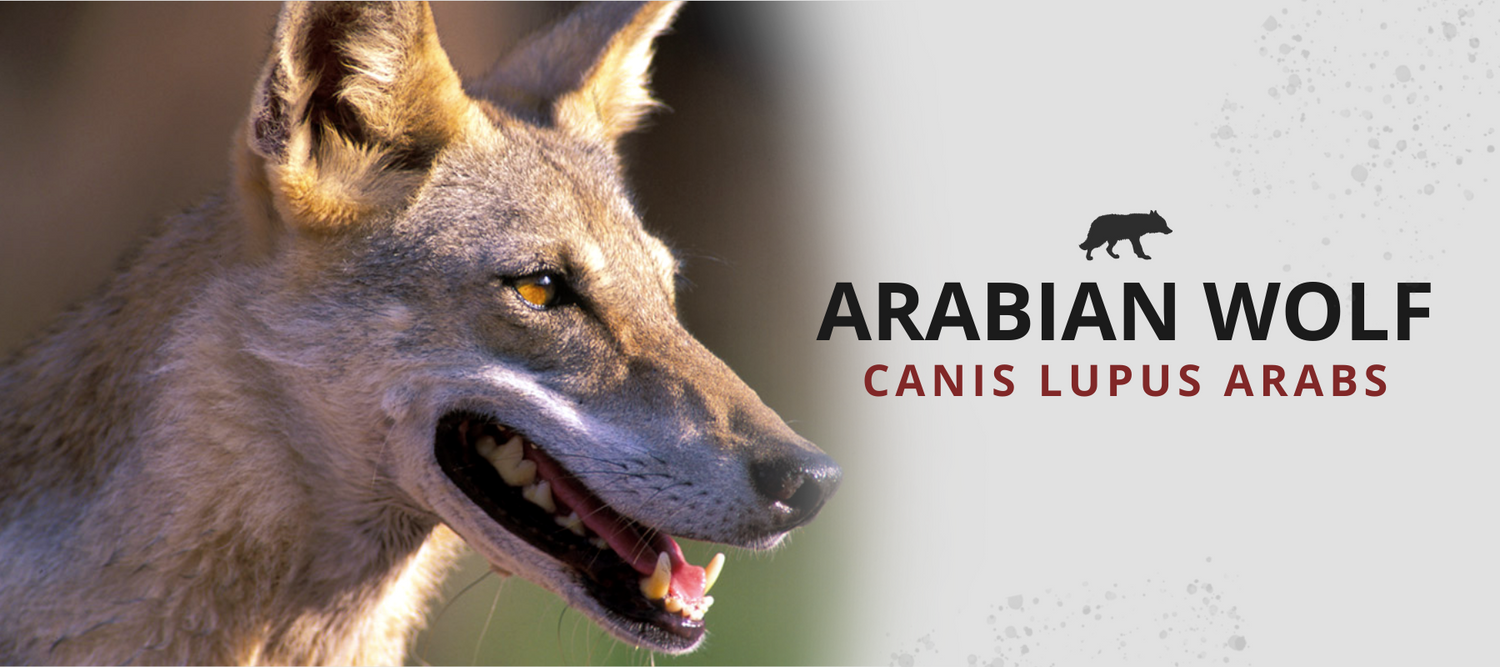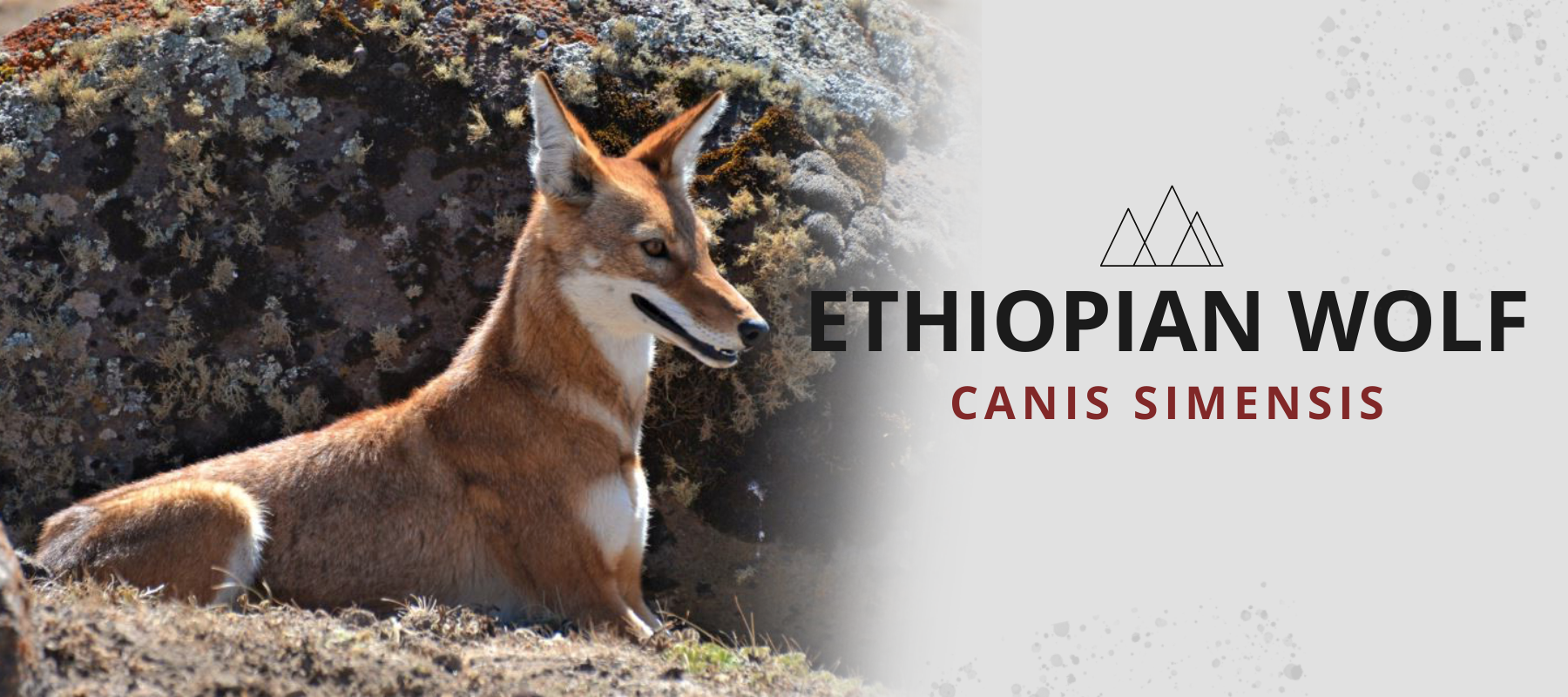
CANIS LUPUS ARABS
The Arabian wolf (Canis lupus arabs), is a subspecies of the grey wolf (Canis lupus) that was once found throughout the Arabian Peninsula. Today we can only observe it in small areas in southern Israel, southern and western Iraq, Oman, Yemen, Jordan, Saudi Arabia, and probably in parts of the Sinai Peninsula in Egypt.
- Common name: Arabian wolf
- Scientific name: Canis Lupus Arabs
- Specie: Gray wolf
- Type: Mammals
- Diet: Carnivore
- Average size: 2,1 feet
- Average weight: 40 lbs
ARABIAN WOLF DESCRIPTION
The Arabian wolf is the smallest and perhaps most poorly known of the wolf subspecies. It weighs about 40 lbs (18 kg) and measures 2,1 feet (66 cm) at the withers.
Its light colored coat facilitates camouflage in the desert. His fur is very thin to be adapted to the dunes of Arabia, one of the hottest regions of the planet. Its ears are quite large compared to those of more northern wolves, which improves hearing, but also allows heat to escape and thus cool the animal.

ARABIAN WOLF HABITAT
The Arabian wolf species occupies the entire Arabian Peninsula and wolves have recently been seen in protected areas near the Iraqi-Jordanian border. Some specialists believe that the wolves in southern Israel belong to the subspecies Canis lupus arabs.
ARABIAN WOLF DIET
In the desert, domestic and wild animals are forced to live near the few water points, giving the wolf the opportunity to hunt livestock as well as hares, rodents and wild ungulates.
The Arabian wolf also explores garbage dumps and sometimes feeds on road kills and livestock carcasses.

ARABIAN WOLF BREEDING
The mating season takes place in January and February. Births occur two months later in litters of five or six cubs. These desert wolves don't seem to have a classic hierarchical structure observed in other wolf packs. Rather, they are seen to move about on their own or in pairs.
ARABIAN WOLF BEHAVIOR
At the hottest part of the day, the wolf digs a hole to bury himself in the cooler sand. It is mainly nocturnal, except during the winter months when it is cooler and is seen more often during the day.

ARABIAN WOLF POPULATION
The first list of Arabian wolves was carried out by specialists at the end of 1991. Initial results indicate that the population is stable and widely distributed. Numbers are between 600 and 700 specimens.
ARABIAN WOLF THREATS
Arabian desert mammals, especially predators, have suffered a dramatic decline in their populations in recent decades. They have been slaughtered, trapped, poisoned and massacred by all means.
Today the hunting of predators has been banned, but human activities have seriously damaged natural habitats and the chances of survival of some of them seem to be seriously compromised.
The desert of the United Arab Emirates has itself experienced local extinctions of species that once roamed these vast wilderness areas across its arid desert. These include the Arabian wolf, which has not been seen in the wild in the country since the 1980s. To see it in the United Arab Emirates, you must go to the Sharjah Wildlife Center.
Farmers and herders have always felt a strong animosity towards the wolf because it preys on livestock. Retaliatory killing by farmers is still practiced today to kill as many wolves as possible.
Desert conditions force both wild and domestic animals to live close to limited water resources. Being an opportunist, the Arabian wolf is just as likely to feed on livestock as wild hares, rodents or ungulates.
Hybridization with wild dogs is also one of the major threats to the species' survival. The eyes of the pure Arabian wolf are yellow with black pupils. Unfortunately, there are many with brown eyes, a sure sign that they are hybrids.

ARABIAN WOLF CONSERVATION
Despite the satisfactory 1991 inventory, the future of the Arabian wolf species is not assured. Its presence is very badly accepted by farmers and shepherds who shoot it on sight or poison it at the first opportunity.
Even today, shepherds still hang wolf carcasses from trees or poles in revenge for this predator, which they accuse of decimating their herds. Damage figures are scarce and there are no regulations providing for compensation.
Saudi Arabia's National Commission for Wildlife Conservation and Development is currently trying to place the wolf on the list of endangered species, which would lead to the establishment of a management plan to ensure its continued existence.
On the Red Sea coast of Ethiopia, the Ethiopian wolf (also known as the Simian jackal or Abyssinian wolf) is afflicted by rabies. WWF warns that a rabies epidemic in south-eastern Ethiopia threatens the survival of this most endangered member of the world's canine family.
At least 30 specimens have died in 2003 since the disease broke out. Since the first death was reported, conservationists have isolated the affected wolves and begun a vaccination program in an attempt to contain the outbreak.
The Ethiopian wolf is already under threat of human/wildlife conflict. Their natural habitat is being eroded further each day by increasing demographics and is often killed by local people living near the national park who perceive them as a threat to themselves and their livestock.
If you want to support wolf conservation, proudly wear our wolf hoodies!



